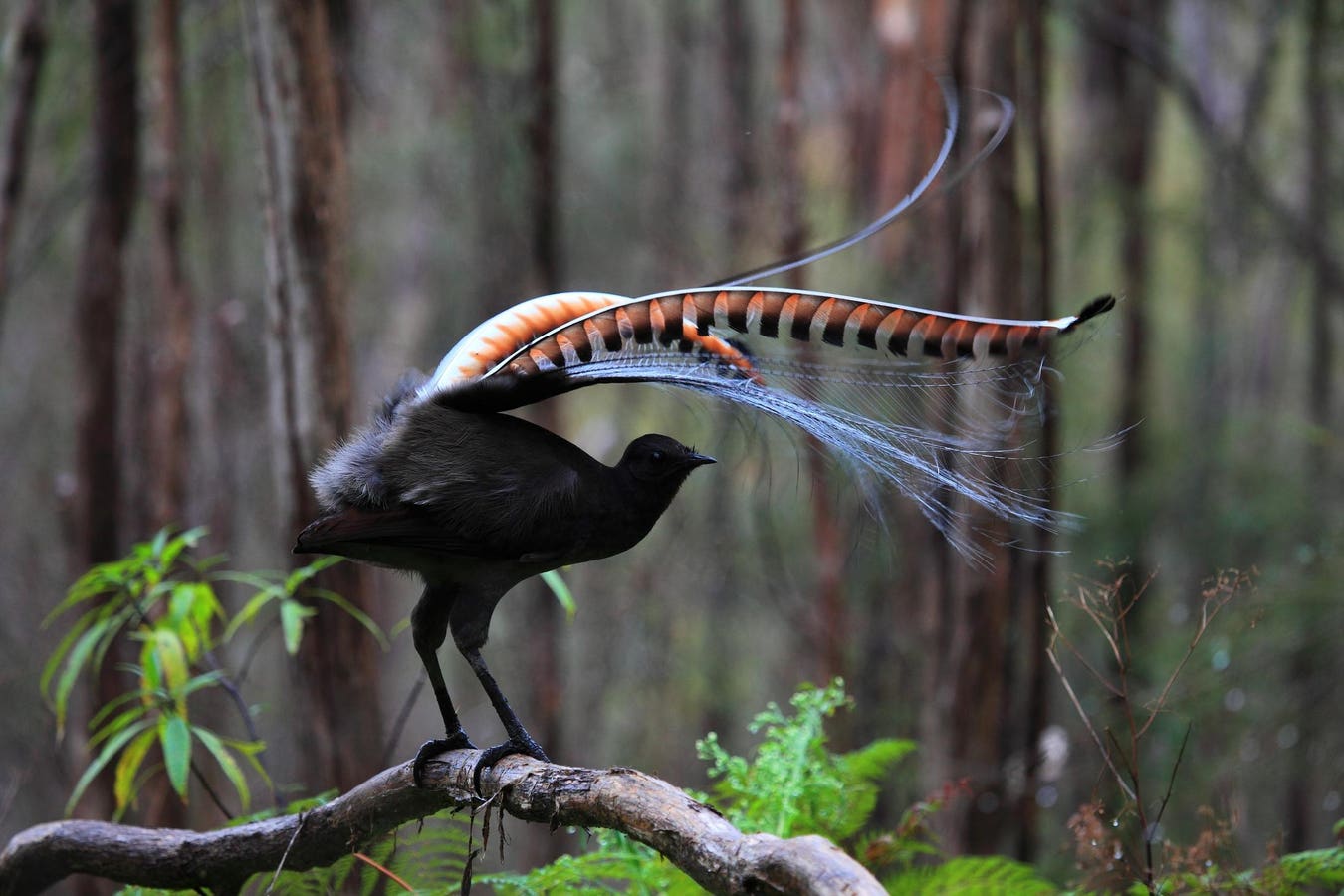The peacock is the bird most well-known for its radiant tail plumage. But that’s not to say it’s the … More
Beauty, they say, is in the eye of the beholder.
Well, if you ask this biologist to weigh in on the question of birds with the prettiest tail feathers, I’d tell you to take a look at the exquisite backside of Australia’s superb lyrebird. Sure, its plumage may not be as big or ostentatious as the peacock’s – though, to be fair, ostentatiousness is an important quality as these feathers have evolved to capture the attention of potential mates. But it is every bit as intricate and well-colored.
In fact, the sheer beauty of its plumage almost caused the superb lyrebird, and its smaller cousin, the northern lyrebird, to go extinct around the turn of the 20th century, as its radiant tail feathers were highly valued in the construction of women’s hats (like these). Since then, Australia’s population of lyrebirds has recovered and stabilized.
There’s a sad irony here: the radiant plumage of the male lyrebird – evolved to increase its mating opportunities with female lyrebirds – nearly led to its demise due to demand from humans who wanted to use it for more or less the same evolutionary reason. Perhaps the worst part of the story is that the lyrebird isn’t alone in this regard; many species have been overhunted due to being viewed as a sought-after fashion accessory, and some went extinct because of it.
(Sidebar: Discover the surprising link between the global bird extinction crisis and the most valuable package lost aboard the Titanic.)
We can, and should, feel sad for the lyrebirds needlessly killed in pursuit of crafting a more fashionable hat, but I’ll give you one scientific fact that might temper your pity. According to recent research published in Current Biology, male lyrebirds – who typically have a mellifluous chirp – sometimes mimic the sound of a mobbing flock of birds during courtship and copulation. This is presumably done to discourage their female target from leaving their protective company when a mating opportunity arises.
Here is more detail on Australia’s most radiant bird, and a few other bird species (not peacocks) that also have exquisite tails.
The Superb Lyrebird – The Prettiest Of Them All
Superb lyrebird in full display, fanning its ornate tail feathers.
The superb lyrebird’s tail is a model of symmetry and texture. When fanned out during courtship displays, the tail feathers form a shape reminiscent of a classical lyre, the musical instrument from which the bird gets its name. This fan is made up of 16 feathers: two long outer feathers with curve and twist, two filamentous central plumes, and twelve lace-like display feathers that shimmer in the light. These structural characteristics reflect and refract light in a way that creates a subtle but dazzling iridescence – less like the bold sparkle of a peacock and more like fine lace held up to sunlight.
What makes the lyrebird especially compelling is that its beauty isn’t just visual. Its song is arguably the most complex in the avian world. The lyrebird is a master mimic, able to reproduce the calls of other birds, chainsaws, camera shutters, car alarms, and even human voices with uncanny precision.
This dazzling audio-visual display is performed atop a low branch or mound in the forest, where females can get a clear view. The males rehearse their routines obsessively — some even mimic environmental sounds they’ve only heard once. This unique combination of physical and sonic beauty makes the superb lyrebird a true performer in the animal kingdom.
Two Other Birds, Not Peacocks, With Exquisite Tail Plumages
The peacock and lyrebird aren’t alone in the avian world when it comes to spectacular tails. Let’s take a look at two other birds with rear feathers that rival even the most flamboyant peacock.
Male resplendent quetzal in flight, trailing its iridescent green tail feathers through the cloud … More
First is the resplendent quetzal, native to the cloud forests of Central America. Revered by the ancient Mayans and Aztecs, this bird has a shimmering green body, vivid red breast and a tail that can stretch up to three feet long in males. Its tail feathers are iridescent and appear to change color depending on the angle of light, a trait caused by microscopic structures rather than pigmentation. The tail isn’t just for show – it plays a crucial role in mating rituals, where the male performs slow, swooping flights through the forest canopy to capture a female’s attention.
Indian paradise flycatcher feeding its hungry chicks
Then there’s the Indian paradise flycatcher. This slender bird is known for its elongated tail streamers, which can grow more than twice the length of its body in breeding males. These tail feathers trail elegantly behind as the bird weaves through the forest in pursuit of flying insects. The bird’s plumage varies from white to rufous. In either coloration, the contrast between its sleek body and long, ribbon-like tail feathers makes it an unforgettable sight.
Are you an animal lover who owns a pet, perhaps even a pet bird? Take the science-backed Pet Personality Test to know how well you know your little friend.








